Frick was born in Knonau, the son of a travelling salesman. Frick was a founder, who became a union member and then anarchist. He was editor of anarchist newspaper Weckruf (1904-1906). He served a year in prison (1912-1913) for his involvement in liberating a Russian anarchist from incarceration in Zurich. From 1911, he lived with Frieda Gross-Schloffer, wife of psychoanalyst Otto Gross, then from 1920, with photographer Margarethe Fellerer, whom he married in 1941. He became a painter at the urging of Artur Segal, and published essays on archaeology and the history of language. [1]

Emma Goldman was a Lithuanian-born anarchist revolutionary, political activist, and writer. She played a pivotal role in the development of anarchist political philosophy in North America and Europe in the first half of the 20th century.

Max Ernst was a German painter, sculptor, printmaker, graphic artist, and poet. A prolific artist, Ernst was a primary pioneer of the Dada movement and Surrealism in Europe. He had no formal artistic training, but his experimental attitude toward the making of art resulted in his invention of frottage—a technique that uses pencil rubbings of textured objects and relief surfaces to create images—and grattage, an analogous technique in which paint is scraped across canvas to reveal the imprints of the objects placed beneath. Ernst is noted for his unconventional drawing methods as well as for creating novels and pamphlets using the method of collages. He served as a soldier for four years during World War I, and this experience left him shocked, traumatised and critical of the modern world. During World War II he was designated an "undesirable foreigner" while living in France.
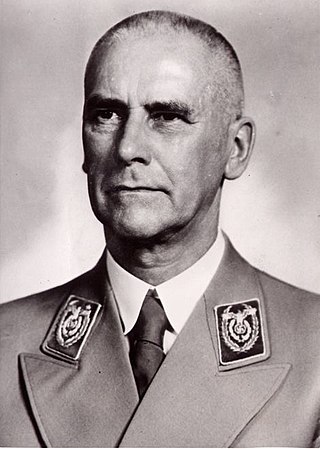
Wilhelm Frick was a convicted war criminal and prominent German politician of the Nazi Party (NSDAP) who served as Minister of the Interior in Adolf Hitler's cabinet from 1933 to 1943 and as the last governor of the Protectorate of Bohemia and Moravia.
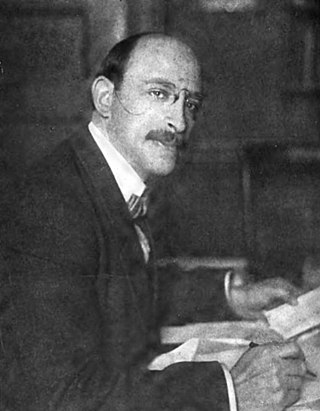
Alexander Berkman was a Russian-American anarchist and author. He was a leading member of the anarchist movement in the early 20th century, famous for both his political activism and his writing.

Henry Clay Frick was an American industrialist, financier, and art patron. He founded the H. C. Frick & Company coke manufacturing company, was chairman of the Carnegie Steel Company and played a major role in the formation of the giant U.S. Steel manufacturing concern. He had extensive real estate holdings in Pittsburgh and throughout the state of Pennsylvania. He later built the Neoclassical Frick Mansion in Manhattan, and upon his death donated his extensive collection of old master paintings and fine furniture to create the celebrated Frick Collection and art museum. However, as a founding member of the South Fork Fishing and Hunting Club, he was also in large part responsible for the alterations to the South Fork Dam that caused its failure, leading to the catastrophic Johnstown Flood. His vehement opposition to unions also caused violent conflict, most notably in the Homestead Strike.
Anarchism in the United States began in the mid-19th century and started to grow in influence as it entered the American labor movements, growing an anarcho-communist current as well as gaining notoriety for violent propaganda of the deed and campaigning for diverse social reforms in the early 20th century. By around the start of the 20th century, the heyday of individualist anarchism had passed and anarcho-communism and other social anarchist currents emerged as the dominant anarchist tendency.
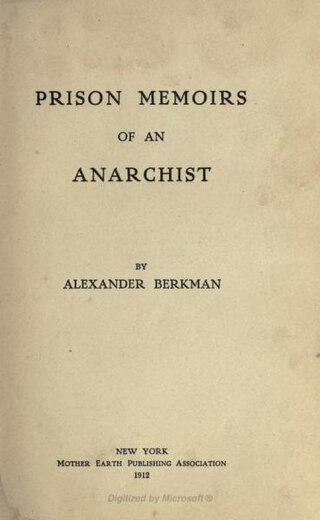
Prison Memoirs of an Anarchist is Alexander Berkman's account of his experience in prison in Western Penitentiary of Pennsylvania, in Pittsburgh, from 1892 to 1906. First published in 1912 by Emma Goldman's Mother Earth press, it has become a classic in autobiographical literature. The book touches on themes of political violence and incarceration, as well as develops Berkman's theory of anarchist politics.
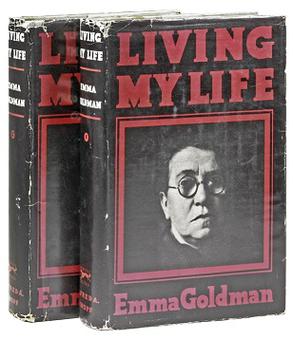
Living My Life is the autobiography of Lithuanian-born anarchist Emma Goldman, who became internationally renowned as an activist based in the United States. It was published in two volumes in 1931 and 1934. Goldman wrote it while living in Saint-Tropez, France, following her disillusionment with the Bolshevik role in the Russian Revolution.
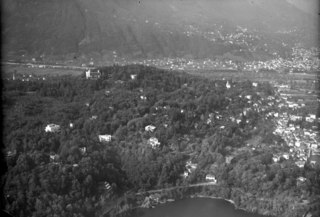
Monte Verità is a 321 metres above sea level high hill and a cultural-historical ensemble in the Swiss canton of Ticino. The site is in the municipality of Ascona, about half a kilometre north-west of the old town. Monte Verità, located on Lake Maggiore, was a well-known meeting place for the life-reformers (Lebensreform), pacifists, artists, writers and supporters of various alternative movements in the first decades of the 20th century. After 1940 the place lost its importance. An attempt at a revival in the late 1970s met with very limited success.
Fritz Köster was a German anarchist editor and trade unionist.

John George Alexander Leishman was an American businessman and diplomat. He worked in various executive positions at Carnegie Steel Company, rising to President, and later served as an ambassador for the United States to Switzerland, the Ottoman Empire, Italy, and Germany.

Freiheit was a long-running anarchist journal established by Johann Most in 1879. It was known for advocacy of attentat, or propaganda of the deed—revolutionary violence that could inspire people to revolution.

The Polish Rider is a seventeenth-century painting by Rembrandt, usually dated to the 1650s, of a young man traveling on horseback through a murky landscape, now in The Frick Collection in New York. When the painting was sold by Zdzisław Tarnowski to Henry Frick in 1910, there was consensus that the work was by the Dutch painter Rembrandt. This attribution has since been contested, though those who contest it remain in the minority.
Der Einzige is the title of a German egoist anarchist magazine, which appeared in 1919, as a weekly, then sporadically until 1925. It was edited by Anselm Ruest, and co-edited, in the first year, by Mynona, who was his uncle. Its title was adopted from the book Der Einzige und sein Eigentum by Max Stirner. Another influence was the thought of German philosopher Friedrich Nietzsche. The publication was connected to the local expressionist artistic current and the transition from it towards dada.
Ernst Frick was a Swiss footballer who played as a midfielder for Switzerland in the 1934 FIFA World Cup. He also played for FC Luzern. Frick is deceased.
Events in the year 1877 in Germany.
Ernst Frick may refer to:

Modest Stein (1871–1958), born Modest Aronstam, was a Lithuanian Jewish and American illustrator and close associate of the anarchists Alexander Berkman and Emma Goldman. He was Berkman's cousin and intended replacement in the attempted assassination of Henry Clay Frick, an industrialist and union buster, in 1892. Later Stein abandoned active anarchism and became a successful newspaper, pulp magazine, and book illustrator, while continuing to support Berkman and Goldman financially.

Vienna porcelain is the product of the Vienna Porcelain Manufactory, a porcelain manufacturer in Alsergrund in Vienna, Austria. It was founded in 1718 and continued until 1864.
Roman Lewis (1864–1918) was a prominent Jewish anarchist in New York. Fluent in Russian and Yiddish, he was the first editor of the Yiddish-language anarchist newspaper Fraye Arbeter Shtime. For a time, Lewis was the Pioneers of Liberty's best speaker. Lewis attended gymnasium in Russia. In New York, when he wasn't working at making shirts, he spent his leisure time with the anarchist movement and spoke at Jewish union rallies. He later became a Social-Democrat, attended law school in Chicago, where he remained. He was elected an assistant district attorney in Chicago as a Democrat. Lewis committed suicide in Cincinnati in 1918.